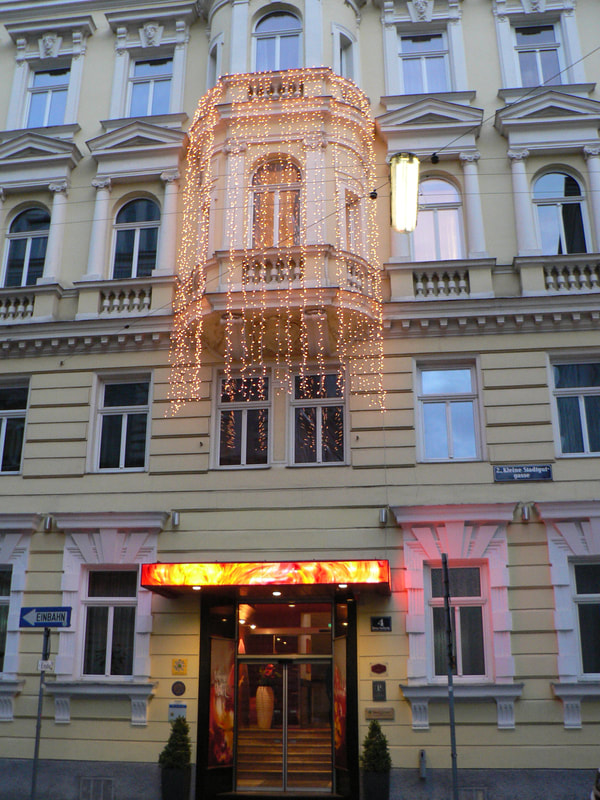
Our Austrian adventure began in the usual mundane fashion at Bristol airport, where EasyJet had the temerity to send us a broken aeroplane, we had a three hour delay while we waited for a more air-worthy vehicle.
Finally we were airborne, and in a couple of hours we were in beautiful Vienna, which was looking suitably seasonal with a light dusting of snow. From the airport, we boarded the metro to the Leopoldstadt area where we found our hotel, Der Wilhelmshof, a modern, and rather arty place in a nineteenth century building.
Being ancient, we felt justified in having a quick bite to eat in the hotel bar and retiring to our bed early. It had been a long day.
Finally we were airborne, and in a couple of hours we were in beautiful Vienna, which was looking suitably seasonal with a light dusting of snow. From the airport, we boarded the metro to the Leopoldstadt area where we found our hotel, Der Wilhelmshof, a modern, and rather arty place in a nineteenth century building.
Being ancient, we felt justified in having a quick bite to eat in the hotel bar and retiring to our bed early. It had been a long day.
We were up (reasonably) early, and after a hearty breakfast, ventured out onto the streets of Vienna. I was particularly looking forward to visiting the National Library, and after an hours walk, we found it. Closed. Disappointed, but undeterred, we found The Natural History Museum a short walk away, there were many fascinating artefacts to be found, and we spent a couple of captivating hours there. Most compelling for me was the mass grave of 47 soldiers who died in The Battle of Lutzen in 1632, represented here precisely as the archaeologists found it, for me it perfectly demonstrates the horror and wickedness of war.
From the museum, we made our way through the vibrant streets of Vienna to Stephensplatz, perhaps the most beautiful square in Vienna, which is dominated by the imposing St Stephen’s Cathedral, a perfect example of ‘our kind of architecture’. I may not believe in the existence of the one true god, however, I am always impressed by the buildings erected by his followers, who had way more money than sense.
The inside of the Cathedral is as impressive as its exterior, however, what really interested us, was the crypt (of course). The vast Stephansdom crypt is accessed via a staircase to the left of the main floor, it is divided into a number of smaller crypts and catacombs, and is still used for its original purpose to this day, although entry requirements are strict, you will need to be royalty or an archbishop to spend your eternity in this place. Within the cold walls of the Ducal Crypt, the organs of Emperors, Queens and Princes are kept, we stood surrounded by over 60 stone jars containing the viscera and intestines of Vienna’s great and good, including Empress Maria Therisia’s stomach.
In 1735, the bubonic plague decimated the population of Vienna, and the bodies were piling up, all the local cemeteries and charnel houses were literally oozing corpses, so pits were dug in the floor of the crypt, and thousands of bodies were thrown into them.
The Viennese are an orderly lot, so they sent down some prison inmates to scrub the flesh from the bones of the stinking, rotting corpses, breaking the skeletons down into individual bones and stacking them neatly in deep rows. The smell is gone, but the bones and skulls remain, glaring balefully from the carefully arranged tiers at their living visitors.
The inside of the Cathedral is as impressive as its exterior, however, what really interested us, was the crypt (of course). The vast Stephansdom crypt is accessed via a staircase to the left of the main floor, it is divided into a number of smaller crypts and catacombs, and is still used for its original purpose to this day, although entry requirements are strict, you will need to be royalty or an archbishop to spend your eternity in this place. Within the cold walls of the Ducal Crypt, the organs of Emperors, Queens and Princes are kept, we stood surrounded by over 60 stone jars containing the viscera and intestines of Vienna’s great and good, including Empress Maria Therisia’s stomach.
In 1735, the bubonic plague decimated the population of Vienna, and the bodies were piling up, all the local cemeteries and charnel houses were literally oozing corpses, so pits were dug in the floor of the crypt, and thousands of bodies were thrown into them.
The Viennese are an orderly lot, so they sent down some prison inmates to scrub the flesh from the bones of the stinking, rotting corpses, breaking the skeletons down into individual bones and stacking them neatly in deep rows. The smell is gone, but the bones and skulls remain, glaring balefully from the carefully arranged tiers at their living visitors.
The next day, we found The National Library open, and it was worth the wait. Commissioned by Emperor Charles VI in the eighteenth century, it contains over 200,000 books, and is perhaps the most beautiful room I have ever seen. The rich patina of carved wood and marble causes the space to glow, and the smell of all those leather bound tomes is intoxicating, being surrounded by all that accumulated knowledge was oddly exhilarating. If you ever find yourself in Vienna, you simply must visit this inspiring place.
On the way back to our hotel, we stopped at The Sacher Café, attached to the infamous Sacher Hotel, home of the Sacher Torte, where we sampled their most famous offering. The coffee was good….
Only one sleep until Salzburg, and our first ever Krampusnacht parade!


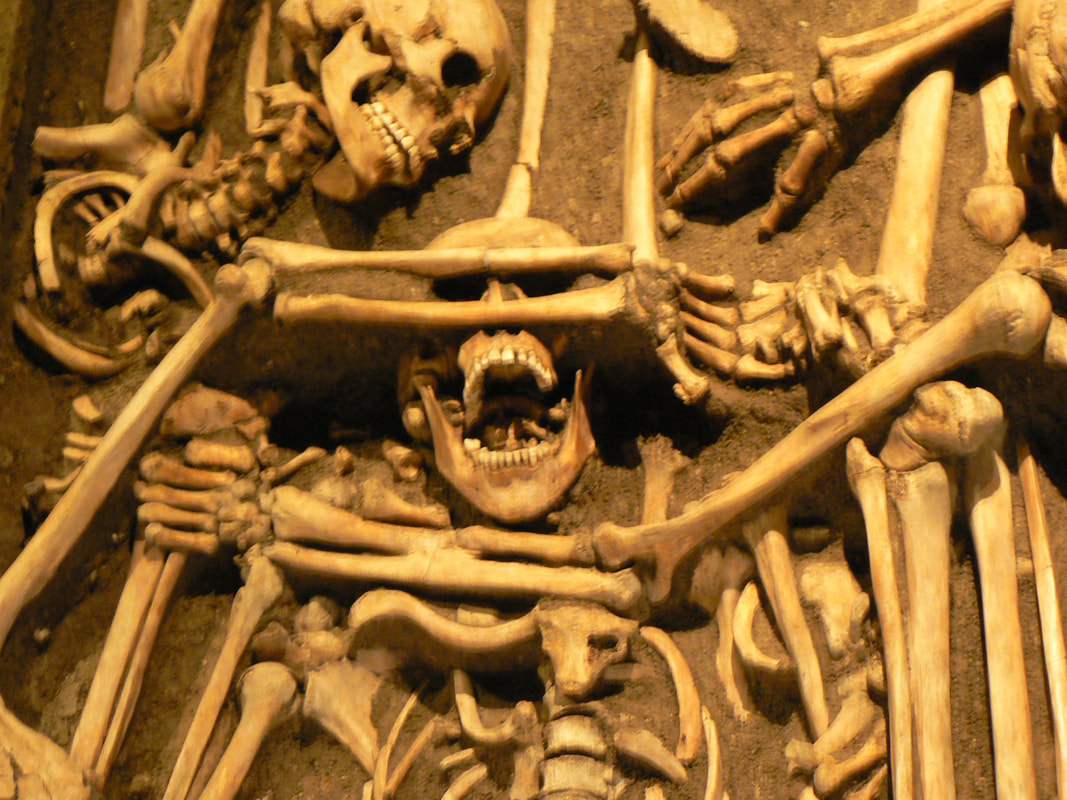
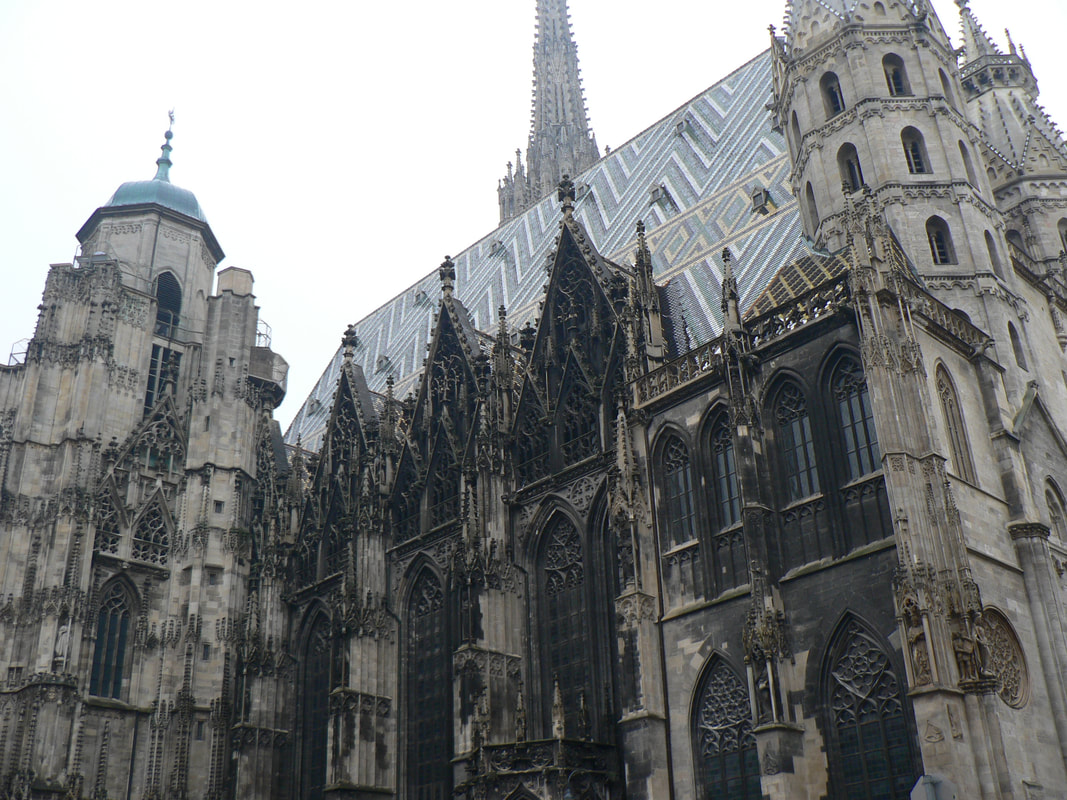
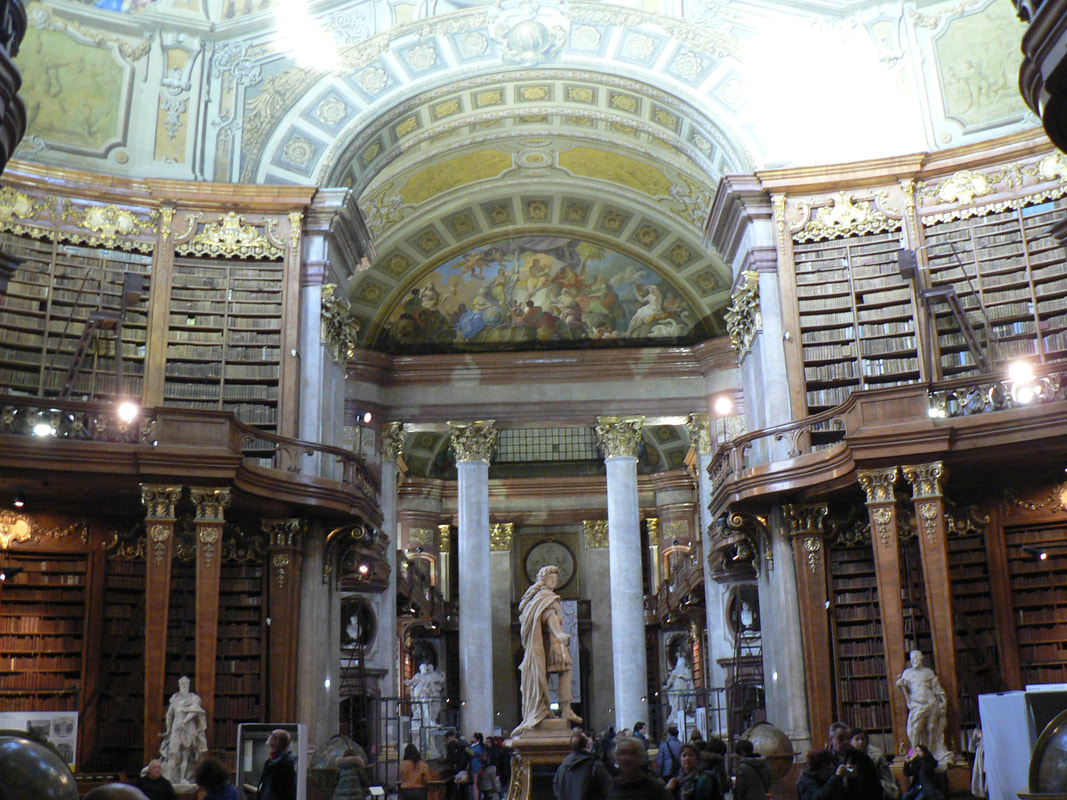
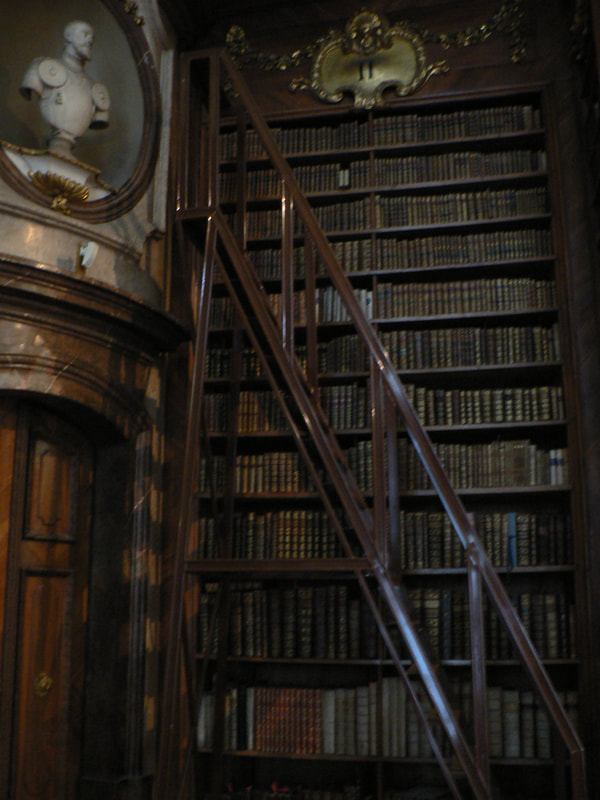
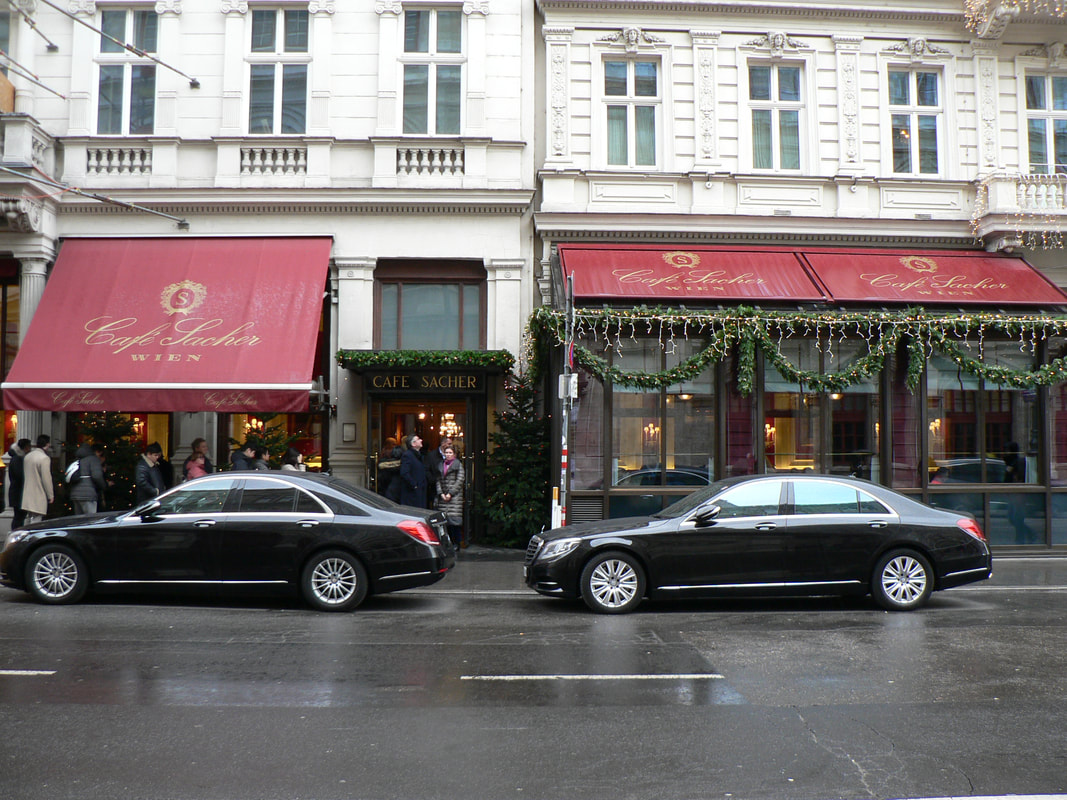
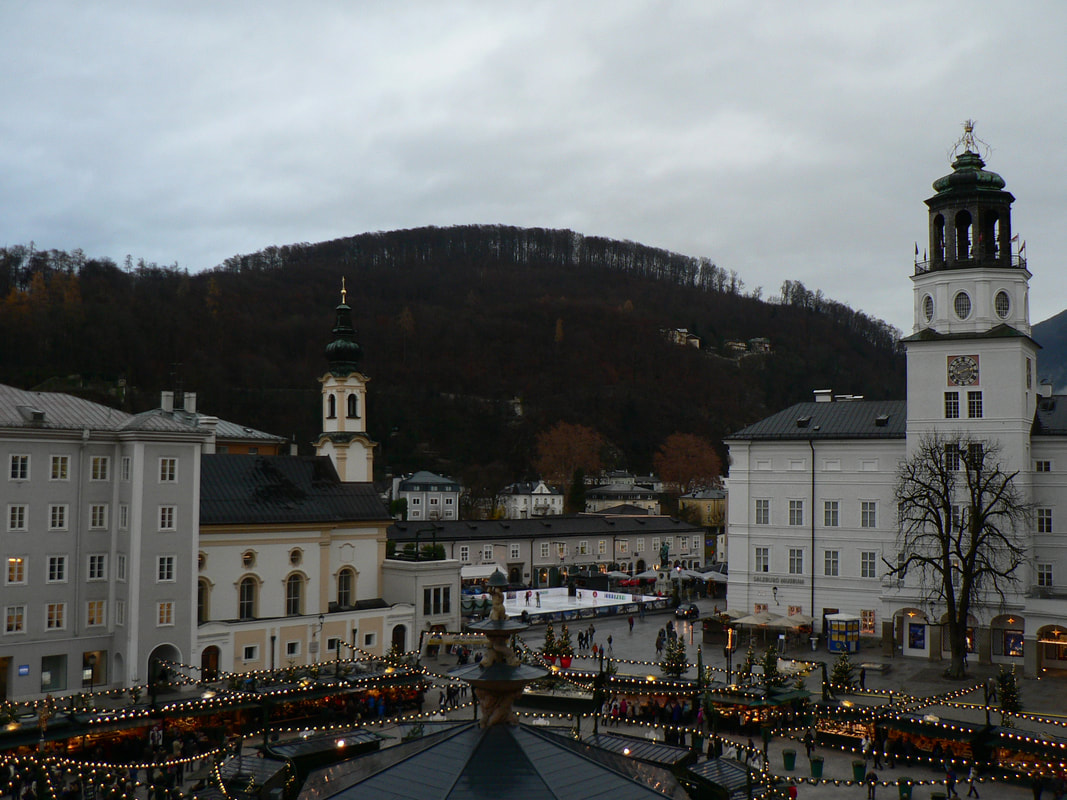
 RSS Feed
RSS Feed